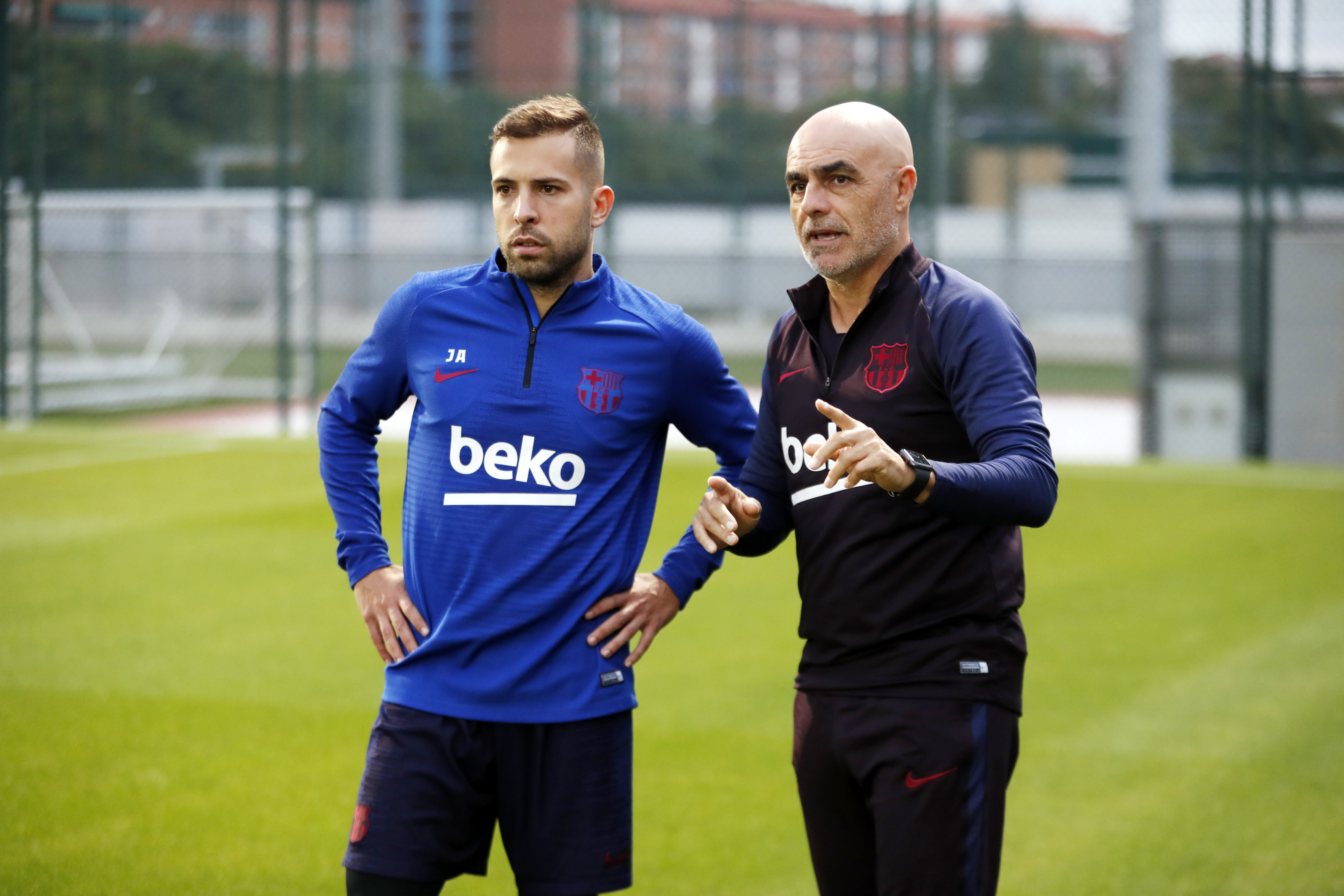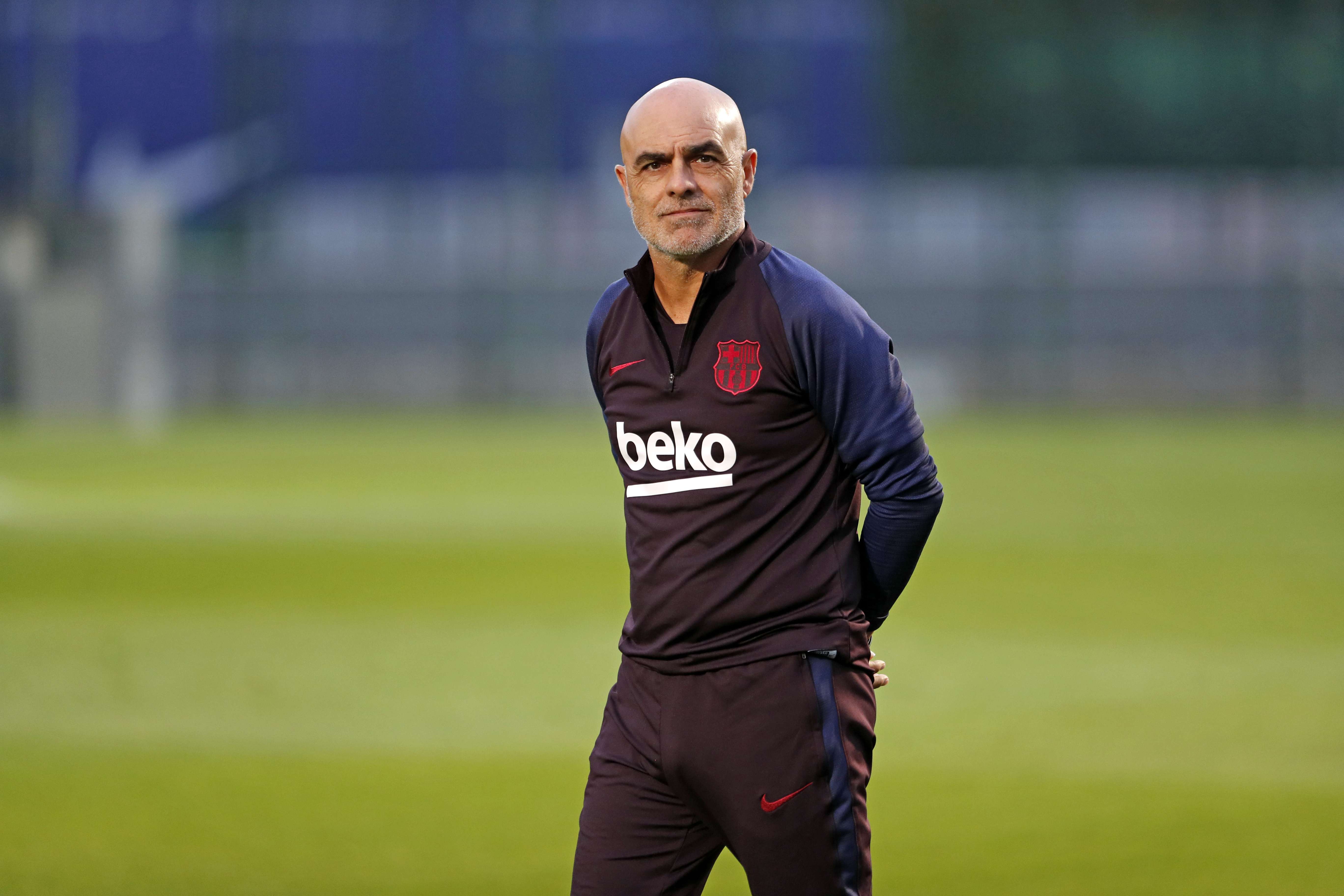February 28, 2020
Injury Management
Health and Wellness
JUANJO BRAU: “INJURIES AREN’T TREATED, THEY’RE MANAGED”
Juanjo Brau arrived at FC Barcelona in 1997 and now he is the head of the physiotherapy department at the club. He holds that there are no manuals to face elite sports demands. To manage injuries with short recovery periods due to competition demands, make scientific knowledge and the use of technology a must but it is also very important the rehabilitator’s intuition to interpret the situation. A combination, in his words, of art and science.
You’ve been in the profession for many years: What’s changed since you started?
A lot of things have changed. There’s much more knowledge, research and technology.
Nowadays what are the physiotherapist’s specific tasks?
For many reasons today they’re indispensable within a team. They’re a link between the player, the medical staff and the coach. The physiotherapist helps the player on a daily basis for his well-being, and I would dare to say that the physiotherapist is indispensable in a team.
Which staff members do you work closer to?
We work hand in hand with the strength and conditioning coach and the coach is key. The physiotherapist is responsible to guarantee the well-being of a player to train in the best conditions. We inform the strength and conditioning coach of the players condition, to adapt the work load to the players physical condition. This, for me, is fundamental.
Every morning, the physiotherapist team meet up for an hour and assess everything that took place the previous day, before the players arrive. We analyze the post-training of the previous day, how the session went, what treatments have the players received, if they feel tired or suffer from pain, etc. In this meeting, we share all this info to create a report where I update the strength and conditioning coach of the situation and he accepts all the recommendations we make related to modulating the training loads if it’s required. There’s a synergy between us.
Do you control fatigue with the use of technology?
The strength and conditioning coach interprets the training data and creates a report where we analyze if due to any deficit from a player this data has been altered in order to inform of this situation. All this information is extracted from the GPS device each player wears during the training session.
You’ve referred to your job in various conferences, as a combination of art and science
You have to start from science, from the knowledge gathered during years, it is about seeing how you’re capable of carrying out using this science. Each professional has a way of interpreting according to parameters or variables he uses, because maybe what I do today, I won’t do it tomorrow. It’s an art because it’s about managing a situation with what science tells us.
Intuition and continuous interpretation, let’s say
It is nonstop. I’ve always said that injuries aren’t treated, they’re managed. I have to put everything into context to start working, I must interpret the situation. I take decisions that I can only explain in each moment.
Along the years, within those intangibles, what’s repeated itself?
As you get older you acquire more experience and knowledge and you make less mistakes, but above all we learn to be clinical, which is to interpret by putting all the variables into context. What’s fundamental is the player’s mood. How am I capable of motivating everyday a player who’s injured and can’t play? What exercises can I give him that are entertaining and not boring? The answer lies on having lived many of these situations and, above all, knowing the player very well. Empathy is key, but you must guide yourself with rational thoughts, not your heart, otherwise you’ll make mistakes.
Working many hours in solitude with the players might also require being a great psychologist.
We are here to help them. Knowing the player is fundamental and the quicker the better. You have to talk a lot with them. Find out their strengths and weaknesses. Because I don’t recover the player, he recovers himself. I only guide him, giving him recommendations as well as confidence, but I don’t have a magic wand. The player must trust and accept that what I’m going to offer him is going to work. It’s fundamental to talk and know if what you offering creates a positive and good feeling to the player. If not, we change and modify the process. I’m never going to make a player do what he doesn’t want to.

How do you prevent the player’s discouragement when injured?
The day a player gets injured it is chaotic for him, but the next day it is the opposite. He knows it’s part of his profession. From there on, I always tell them: “We’re already subtracting days until the comeback”.
One side of your job is to invent, like your famous sand circuits
I’m self-taught and I don’t like repeating exercises. It allows us to create many different possibilities to prevent the athlete from finding it repetitive, otherwise it could generate mental fatigue for the player. Sometimes keeping it simple is what’s most appropriate, although technology can provide other alternatives. However, I’ve never believed a one-fits-all exercise. Improvement and enhancing players can come from many different personalized exercises.

You’ve always said that technology is necessary to quantify what you want to improve
If I can’t quantify something, I can’t improve it. In this case observational analysis is important, so filming players can help. Technology has to accompany, and you have to know how to interpret the data. If I place you a GPS, you can make a sprint at 21 km/h. If I only saw this data, I’d think the player is already recovered, but in fact he may limp while running. I have to be able to quantify, for example, a bad support. Why does he always choose the right? Why does he make more actions to the left? Why does he always jump with the same leg? Likewise, a player’s feeling is also quantifiable data. When one of the players tells you how he feels, it’s objective data; if it’s me who says how I think he’s feeling, it would be subjective. If they say they aren’t well, you must believe them.
How does autosuggestion affect the football player’s recovery?
There are people who somatize a lot. Some find it more difficult to trust. The one who knows his body, generally the veteran player, already knows how things are going. Younger players find it more difficult.
You’ve mentioned sometimes that it’s difficult in this profession to manage deadlines and what surrounds it.
Of course, in the end football is a mood state. The player’s mood is fundamental. The most important day isn’t match day, it’s everything you do to get to the match. When you play, you express all the work and the sensations that you’ve trained during the week.
All sports have evolved, but football not much, only in a shy way and maybe there should be more changes. It’s the only sport in which all players play from the start to the end. Sometimes when a match lacks rhythm, why couldn’t there be more substitutions? Fans want to see the very best from their teams. For example, if you allow three or four substitutions every 15 minutes, the intensity of the game will rise a lot. Always following the same rules to not lose the game’s essence. The players who don’t play, would play more and those who always play wouldn’t suffer as much and feel less exhausted. There are more and more matches, and that means players are going to get injured more and more. It’s already happening. Besides, matches are more physical than ever and if you have two per week, you don’t recover.
What’s the future of this profession?
The implementation of all the new technology applied to the sports field. Sophistication leads you to acquire more knowledge, technology gives you more and more data, but we need consensus to be able to interpret it. Data allows us to quantify globally, what’s key is the data interpretations we make. It needs to be individualized, as sometimes the same data doesn’t work for everybody. The future of sports is tending to individualization, each player has some concrete demands and requirements.
The Barça Innovation Hub team
KNOW MORE
CATEGORY: MARKETING, COMMUNICATION AND MANAGEMENT
This model looks to the future with the requirements and demands of a new era of stadiums, directed toward improving and fulfilling the experiences of fans and spectators, remembering “feeling” and “passion” when designing their business model.
CATEGORY: FOOTBALL SPORTS PERFORMANCE
Through the use of computer vision we can identify some shortcomings in the body orientation of players in different game situations.
CATEGORY: MEDICINE HEALTH AND WELLNESS
A health check must detect situations which, despite not showing obvious symptoms, may endanger athletes subject to the highest demands.
CATEGORY: FOOTBALL TEAM SPORTS
In the words of Johan Cruyff, “Players, in reality, have the ball for 3 minutes, on average. So, the most important thing is: what do you do during those 87 minutes when you do not have the ball? That is what determines whether you’re a good player or not.”
CATEGORY: MEDICINE HEALTH AND WELLNESS SPORTS PERFORMANCE
Muscle injuries account for more than 30% of all injuries in sports like soccer. Their significance is therefore enormous in terms of training sessions and lost game time.
DO YOU WANT TO KNOW MORE?
- SUBSCRIBE
- CONTACT
- APPLY
KEEP UP TO DATE WITH OUR NEWS
Do you have any questions about Barça Universitas?
- Startup
- Research Center
- Corporate